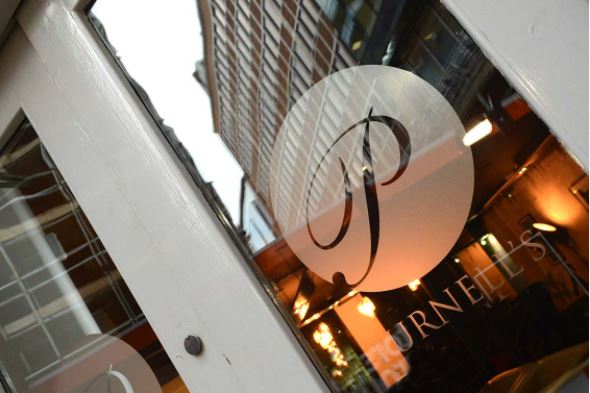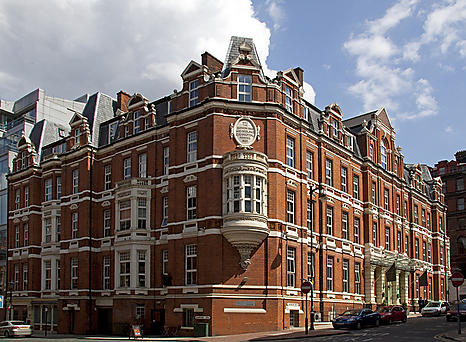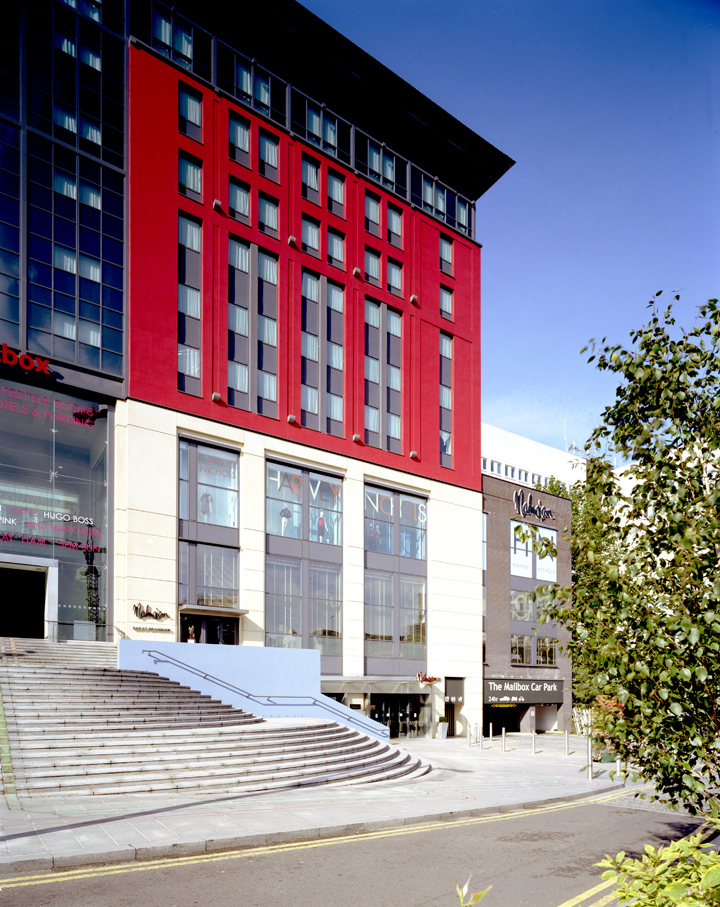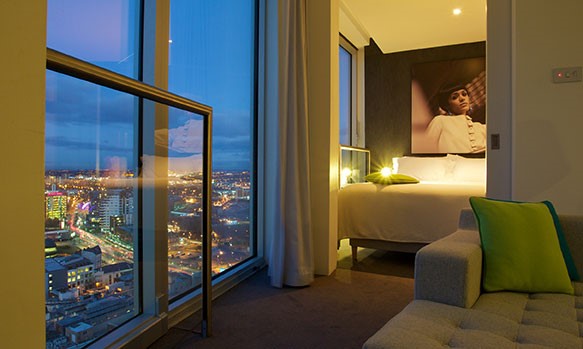Great Barr Hotel is situated in a leafy residential area, and is particularly popular with…
Along the Birmingham Canal

2.75 miles (4.4kms)
About the walk
To walk along the Birmingham Canal in the Black Country is to wallow in social history. The area’s unique spirit, culture and character remain, a place full of quirky traditions and obscure language, though inevitably much of it has moved with the times. This walk, which passes the relics of a landscape once blackened by industry, reflects the years of change and upheaval here but it also reminds those who complete the route that Tipton was the birthplace of a particularly famous son of the town. William Perry was born at Tipton in 1819. His parents were members of the local canal community. In his prime as a pugilist, he stood precisely six feet tall and weighed 13st 4lbs.
The Tipton Slasher
A bout of rickets during infancy had weakened Perry’s right knee, which bent inwards, but in every other respect he was a fine specimen with an impressive physique. He was also a heavy drinker, though his sturdy, muscle-bound frame bore no sign of this. Perry was a natural fighter. He began his sporting career around 1835 when he was in his mid teens. At that time fighting was often undertaken with just bare fists and only the toughest and fittest survived to claim the prize money. Perry’s nickname came about following a particularly vicious fight at nearby Oldbury. The blows were so fast and furious that he became known as ‘The Slasher.’ Many fights followed, some with as many as one hundred rounds or more and there were varying amounts of prize money.
Perry's pub headquarters
The Fountain Inn at Tipton, directly on the route of this walk, was Perry’s headquarters from the start of his career until 1851. A plaque on the wall of the pub recalls that it was erected by the Black Country Society. The Fountain was eventually given Grade II-listed status in recognition of the pub’s famous link with Perry. The fighter regularly held court at the Fountain where the effects of his constant battles over the years were plain to see on his face. William Perry ended up champion prize-fighter of England but age and the consequences of a life in the ring forced him to quit in 1857, aged 38. He then ran a pub, the Bricklayers Arms in Walsall Road, Wolverhampton. A bronze statue of this great man of Tipton, whose name is still celebrated today, can be seen in Coronation Gardens, close to the canal and the pub. It was unveiled in 1993. William Perry died on Christmas Eve 1880, aged 61. He was buried at St John’s Church, Dudley; his remains were later removed and placed in the foundations of the statue.
Walk directions
From Tipton railway station, make for the towpath of the Birmingham Canal and turn left. A row of bungalows can be seen on the opposite bank. Soon you reach a boatyard. A railway line is visible over to the left. Cross two footbridges and pass beneath the next canal bridge (1880). Narrow boats and fishermen are often seen along this stretch. Go under Watery Lane Bridge and then swing left, off the towpath. At the road turn left. Looking back along the canal reveals a striking view of the rooftops of Tipton and the church near the start of the walk.
Go down the steep slope signposted Dudley and Burnt Tree and on reaching the road where Victoria Road and Queens Road meet, go straight over into Victoria Park. Make your way through the park, choosing your own route. Pass the main lake, known as Victoria Pool, and on its southern side keep right with the multi-use games area on your right. Look for an obvious exit to the A457 and turn right on reaching it.
Follow the pavement, with the greenery of Victoria Park glimpsed on your right. Continue along Park Lane West, cross Hill Street and turn left into Baker Street. Make for the Birmingham Canal at Pitchfork Bridge, keep right and follow the towpath to a sign for Tipton Junction. The towpath is lined on this stretch by an interesting mix of industrial units and period buildings, some of which are now apartments.
Walk along to Tipton Green Bridge, pass under it and turn immediately right. At the road turn right to cross the canal and enter the park. Ahead is a statue of William Perry, the Tipton Slasher. Make for the corner of the park and exit to the road by railings. Re-cross the canal to reach the Fountain Inn. Rejoin the towpath at the pub, keeping the waterway on the left, following the sign for the canal cycleway (Wolverhampton). Houses and apartments line the towpath, followed by factories.
Cross the footbridge at Old Factory Bridge, heading towards a pub, the Barge and Barrel. Turn left to pass the Factory Locks, go under Factory Road Bridge and along this stretch is another glimpse of Tipton in the vicinity of the railway station, framed by trees. Pass under Wood Street footbridge and walk along the towpath to the station where the walk began.
Additional information
Towpath, park paths and roadside pavement
Canal and urban park
Off lead on stretches of canal towpath, otherwise under control
OS Explorer 219 Wolverhampton & Dudley
Free car park opposite Tipton railway station on the Birmingham/Wolverhampton line
None on route
WALKING IN SAFETY
Read our tips to look after yourself and the environment when following this walk.
Find out more
Also in the area
About the area
Discover West Midlands
After Greater London, the West Midlands is the UK’s biggest county by population, and after London, Birmingham is the UK’s largest city. There’s a lot to seek out here – it has a vibrant culture, with exceptionally good nightlife. Coventry used to be more important than Birmingham, until the 18th century when the Industrial Revolution started and Brum forged ahead.
Apart from Lady Godiva, Coventry is best known for its cathedrals. The medieval parish church became a cathedral in 1918, but the Blitz on Coventry in 1940 left only the spire and part of the walls. After the war, it was decided to build a new cathedral alongside linked to the ruins.
Dudley was one of the birthplaces of the Industrial Revolution, and this history is reflected in its architecture and the Black Country Living Museum, a recreation of an industrial village, with shops and a pub, cottages and a chapel. Stourbridge is also worth a visit, mainly due to its involvement in glassmaking, which has been going on since the 17th century, and is still a part of the town’s culture; there’s a glass museum and a bi-annual glass festival.
Nearby stays
Restaurants and Pubs
Nearby experiences
Recommended things to do
Why choose Rated Trips?
Your trusted guide to rated places across the UK
The best coverage
Discover more than 15,000 professionally rated places to stay, eat and visit from across the UK and Ireland.
Quality assured
Choose a place to stay safe in the knowledge that it has been expertly assessed by trained assessors.
Plan your next trip
Search by location or the type of place you're visiting to find your next ideal holiday experience.
Travel inspiration
Read our articles, city guides and recommended things to do for inspiration. We're here to help you explore the UK.













